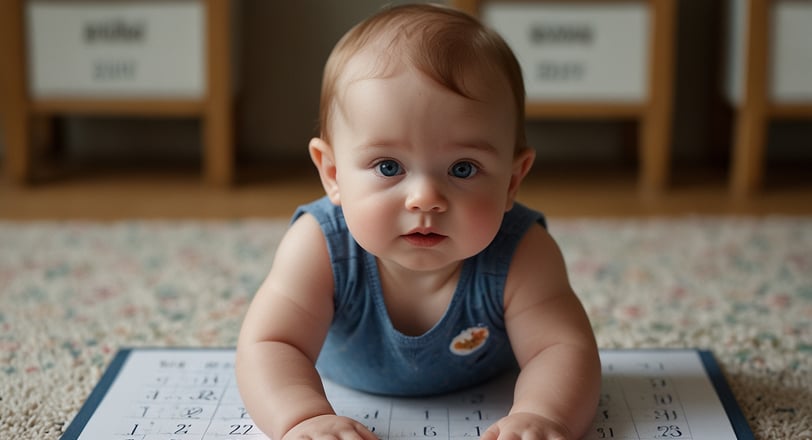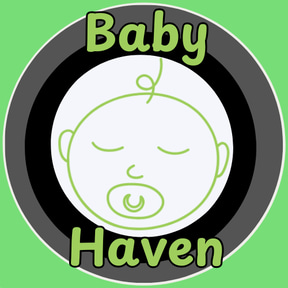Baby Milestones: What to Expect in the First Year
Tracking baby milestones in the first year helps parents support their child's development. This guide outlines key milestones and offers tips for each stage.


The first year of a baby’s life is filled with incredible growth and development. Each month brings new milestones that mark important steps in your baby's physical, emotional, and cognitive development. Understanding these milestones can help parents track their baby’s progress and ensure they are developing healthily. This guide will provide an overview of the key milestones to expect in the first year, along with tips on how to support your baby through these exciting stages.
The Importance of Baby Milestones
Baby milestones are significant because they provide a roadmap of typical development patterns. While each baby is unique and may progress at their own pace, these milestones offer a general timeline of what parents can anticipate. Tracking these milestones can help parents identify any potential developmental delays early, allowing for timely intervention and support.
Month-by-Month Milestones
Month 1: Building Trust and Comfort
In the first month, babies are focused on adjusting to life outside the womb. They rely heavily on their parents for comfort and care.
Physical Milestones: Limited movement; newborns may be able to lift their heads briefly while on their stomachs.
Cognitive Milestones: Recognition of parents’ voices and faces.
Emotional Milestones: Developing a sense of security through touch and comfort.
Month 2: Increased Alertness and Smiling
By the second month, babies become more alert and start to engage with their surroundings.
Physical Milestones: Improved head control, beginning to track objects with their eyes.
Cognitive Milestones: Enhanced visual focus and tracking.
Emotional Milestones: First social smiles in response to seeing parents.
Month 3: Strengthening Muscles and Communication
The third month is marked by increased physical activity and early forms of communication.
Physical Milestones: Pushing up on arms during tummy time, starting to reach for objects.
Cognitive Milestones: Recognizing familiar people and objects.
Emotional Milestones: Coos and gurgles, showing excitement through body movements.
Month 4: Exploring and Interacting
At four months, babies become more interactive and curious about their environment.
Physical Milestones: Rolling from tummy to back, holding and shaking toys.
Cognitive Milestones: Improved memory, recognizing objects and people from a distance.
Emotional Milestones: Laughing and expressing delight.
Month 5: Developing Motor Skills
The fifth month brings further development of motor skills and social interactions.
Physical Milestones: Rolling both ways, sitting with support.
Cognitive Milestones: Showing interest in new textures and sounds.
Emotional Milestones: Responding to emotions of others, such as smiling when someone smiles at them.
Month 6: Sitting Up and Babbling
By the sixth month, babies are often sitting up with minimal support and beginning to babble.
Physical Milestones: Sitting without support, transferring objects from one hand to another.
Cognitive Milestones: Understanding cause and effect, such as shaking a toy to make noise.
Emotional Milestones: Responding to their name, showing interest in mirrors.
Month 7: Exploring Independence
Seven-month-old babies start to show more independence in their actions and movements.
Physical Milestones: Starting to crawl or scoot, standing with support.
Cognitive Milestones: Improved hand-eye coordination, understanding object permanence.
Emotional Milestones: Showing fear of strangers, clinging to parents.
Month 8: Enhanced Mobility
Mobility continues to improve in the eighth month, and babies become more curious about their surroundings.
Physical Milestones: Crawling efficiently, pulling up to stand.
Cognitive Milestones: Exploring objects by shaking, banging, and throwing.
Emotional Milestones: Expressing a range of emotions, from joy to frustration.
Month 9: Cruising and Communicating
At nine months, babies are often cruising (walking while holding onto furniture) and expanding their communication skills.
Physical Milestones: Cruising along furniture, improved hand skills like clapping and waving.
Cognitive Milestones: Beginning to understand simple commands, using gestures to communicate.
Emotional Milestones: Showing attachment to favorite toys, seeking comfort from parents.
Month 10: Increased Curiosity and Interaction
Ten-month-old babies are highly curious and interactive, exploring their environment more actively.
Physical Milestones: Standing alone momentarily, picking up objects with pincer grasp.
Cognitive Milestones: Enjoying peek-a-boo and other interactive games, recognizing their own reflection.
Emotional Milestones: Demonstrating affection, such as giving hugs and kisses.
Month 11: Early Walking and Problem-Solving
By eleven months, some babies start taking their first steps and showing early problem-solving skills.
Physical Milestones: Taking steps while holding onto hands, more controlled movements.
Cognitive Milestones: Using tools to reach objects, understanding simple problems.
Emotional Milestones: Exhibiting shyness or anxiety in new situations, showing clear preferences.
Month 12: First Birthday and New Skills
The twelfth month marks the end of the first year, often celebrated with new skills and milestones.
Physical Milestones: Walking independently or with minimal assistance, improving balance.
Cognitive Milestones: Following simple instructions, imitating actions and sounds.
Emotional Milestones: Showing a strong attachment to caregivers, starting to assert independence.
Supporting Your Baby's Development
Provide a Stimulating Environment
Creating a safe and stimulating environment is key to supporting your baby's development. Use age-appropriate toys and activities that encourage exploration and learning.
Encourage Tummy Time
Tummy time is essential for strengthening your baby’s neck, shoulder, and arm muscles. Start with short sessions and gradually increase the duration as your baby gets more comfortable.
Read and Talk to Your Baby
Reading and talking to your baby from an early age promotes language development. Use a variety of books and engage in conversations, even if your baby doesn’t understand the words yet.
Be Responsive
Respond to your baby’s cues and needs. Consistent, loving responses help build a secure attachment and foster emotional development.
Foster Independence
Encourage your baby to try new things and explore their environment. Providing safe opportunities for independent play and movement helps build confidence and problem-solving skills.
The first year of a baby’s life is a period of rapid growth and development, filled with exciting milestones. While each baby develops at their own pace, understanding what to expect can help parents provide the necessary support and encouragement. By creating a safe and stimulating environment, engaging in interactive activities, and responding to your baby’s needs, you can help them reach these important milestones and set the foundation for a healthy and happy future.
